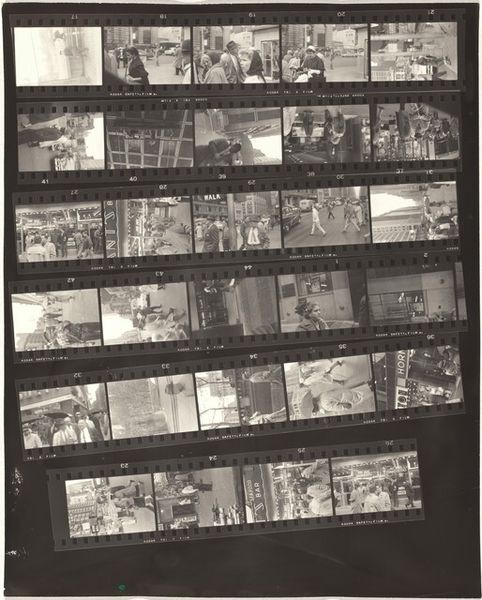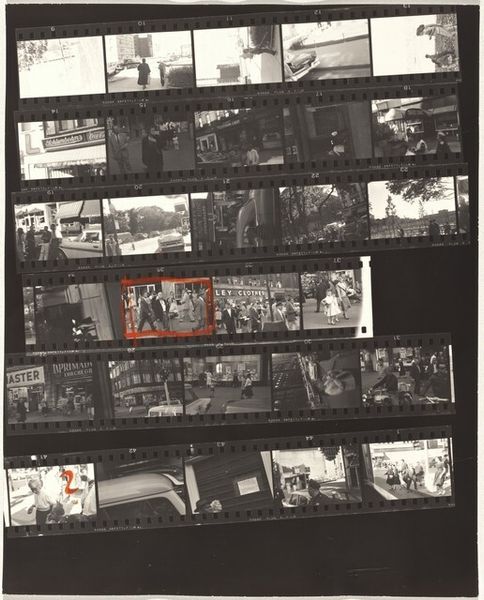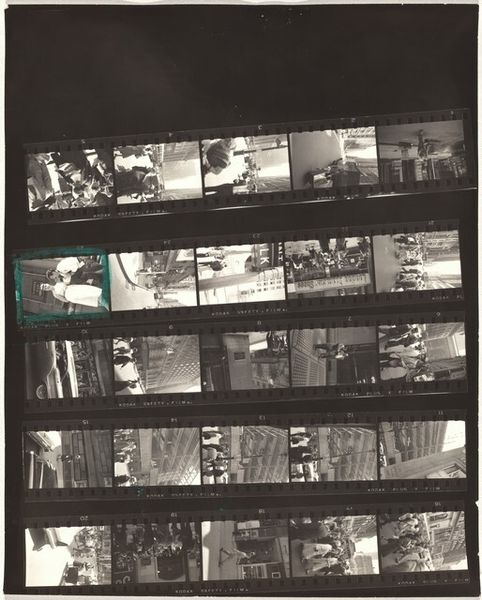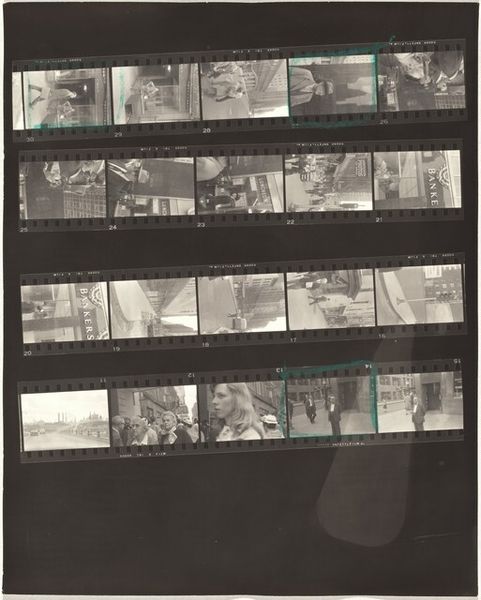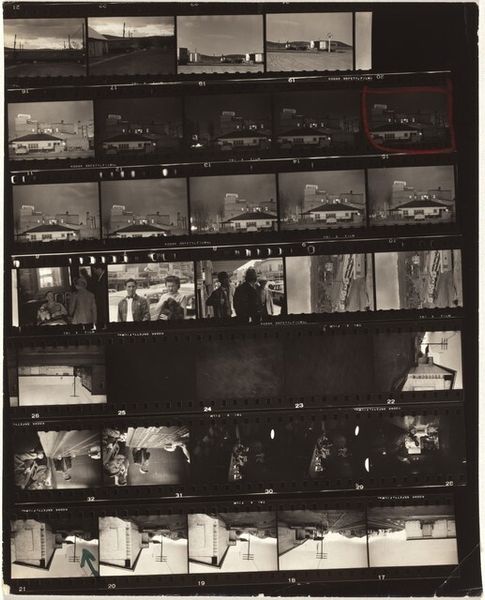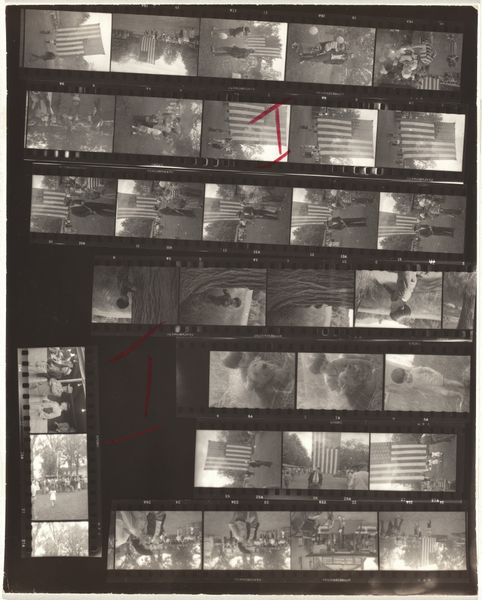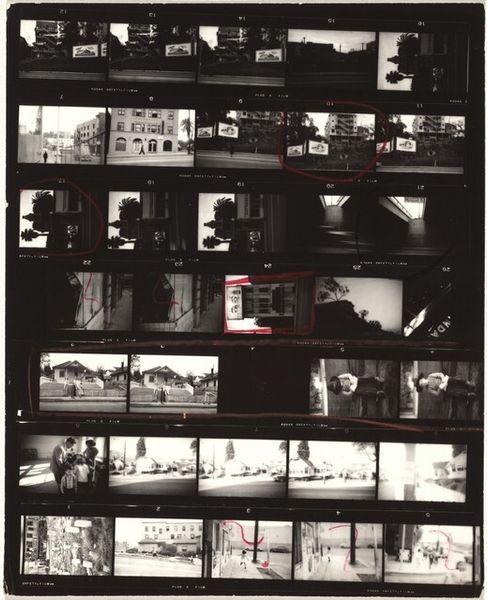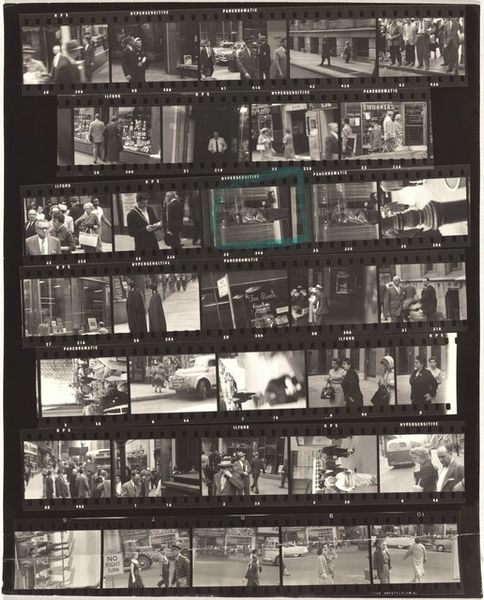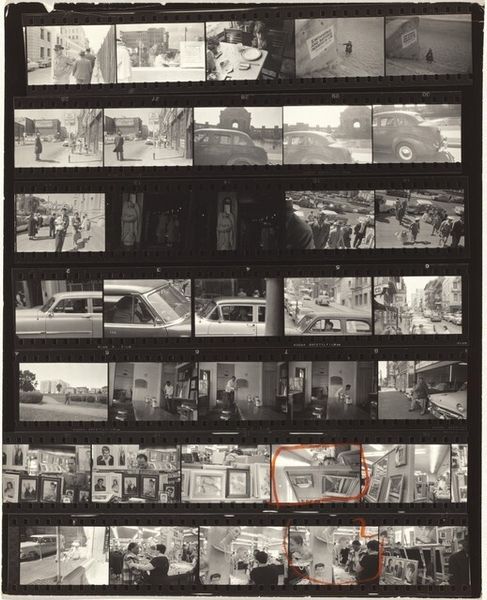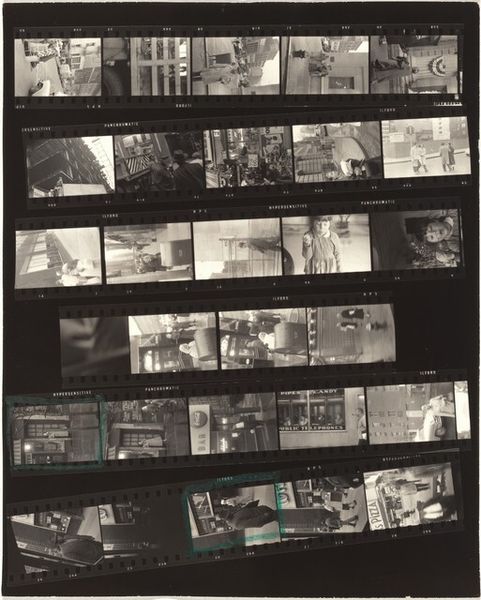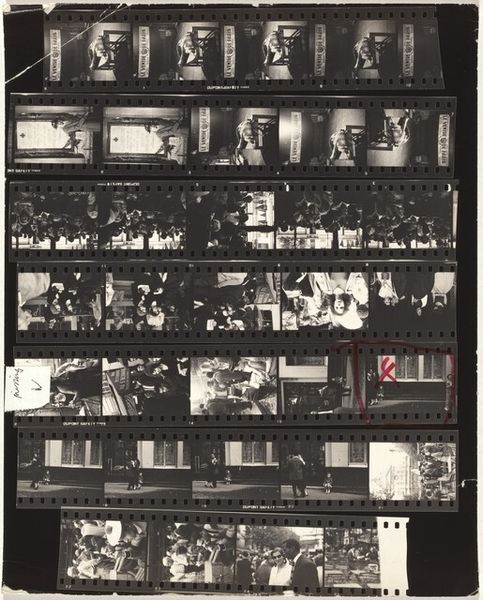
photography
#
film photography
#
street-photography
#
photography
#
realism
Dimensions: overall: 25.2 x 20.2 cm (9 15/16 x 7 15/16 in.)
Copyright: National Gallery of Art: CC0 1.0
Curator: This is Robert Frank's “From the Bus 44,” created in 1958. What strikes you about it initially? Editor: The grittiness, definitely. It's a kind of stark visual diary, raw and unfiltered. There's no gloss here, just real life unfolding frame by frame. It almost feels like an intrusion. Curator: I think that's Frank's magic. He captures these seemingly mundane moments and elevates them. This piece really encapsulates the spirit of street photography, wouldn’t you say? Think about it within the context of postwar America... Editor: Absolutely, street photography as a democratic act, reclaiming public spaces with the gaze. This piece challenges notions of the ideal or the beautiful by turning its focus towards capturing candid shots of the everyday urban experience and revealing subtle truths. Curator: What intrigues me most is its experimental presentation. The photo strip, untouched, the artist showing us the entire process. Not just the end result but the editing as part of the experience. The texture itself, you know, celluloid... the film strip becomes like a song. It feels almost intimate. Editor: Exactly, this presentation exposes photography's inherent selectiveness and questions objectivity by revealing process and context alongside its products. This format disrupts any assumed distance between subject and viewer—drawing us into the photographic moment's creation instead of disguising it. Curator: There’s an almost uncomfortable level of truth that emerges. Like glimpsing private realities on a public stage. He catches people unawares, deep in thought, their guard down, or maybe they didn’t even notice being caught in his art! What’s that quote... Ah, yes. He “sucked a sad poem right out of America onto film." Editor: A melancholic observer exposing the complexities and contradictions that lurk beneath a picture-perfect society by acknowledging invisible communities with his photographs, or just suggesting those gaps in society with photographic practice that might not fit a conventional representation. Curator: Frank’s gaze felt revolutionary then, maybe because so many things he showed would rather have remained unspoken. It challenged conventions not just in style, but in subject too. And in an innovative way, with new possibilities through this strip format, offering us another interpretation to traditional photo arrangement. Editor: Indeed. By emphasizing subjectivity in social contexts this piece remains vital, offering nuanced portraits from untold and unacknowledged vantage points which provoke continuing dialogues about what deserves being seen and heard, beyond simplified histories. Curator: Yes, definitely, "From the Bus 44” is more than a collection of photos; it is a reflective mirror of society, encouraging empathy and a critical examination of our shared experiences. Editor: It really leaves you pondering on both how the gaze is composed as well as who gets to own and be seen within this vision, don’t you think?
Comments
No comments
Be the first to comment and join the conversation on the ultimate creative platform.
